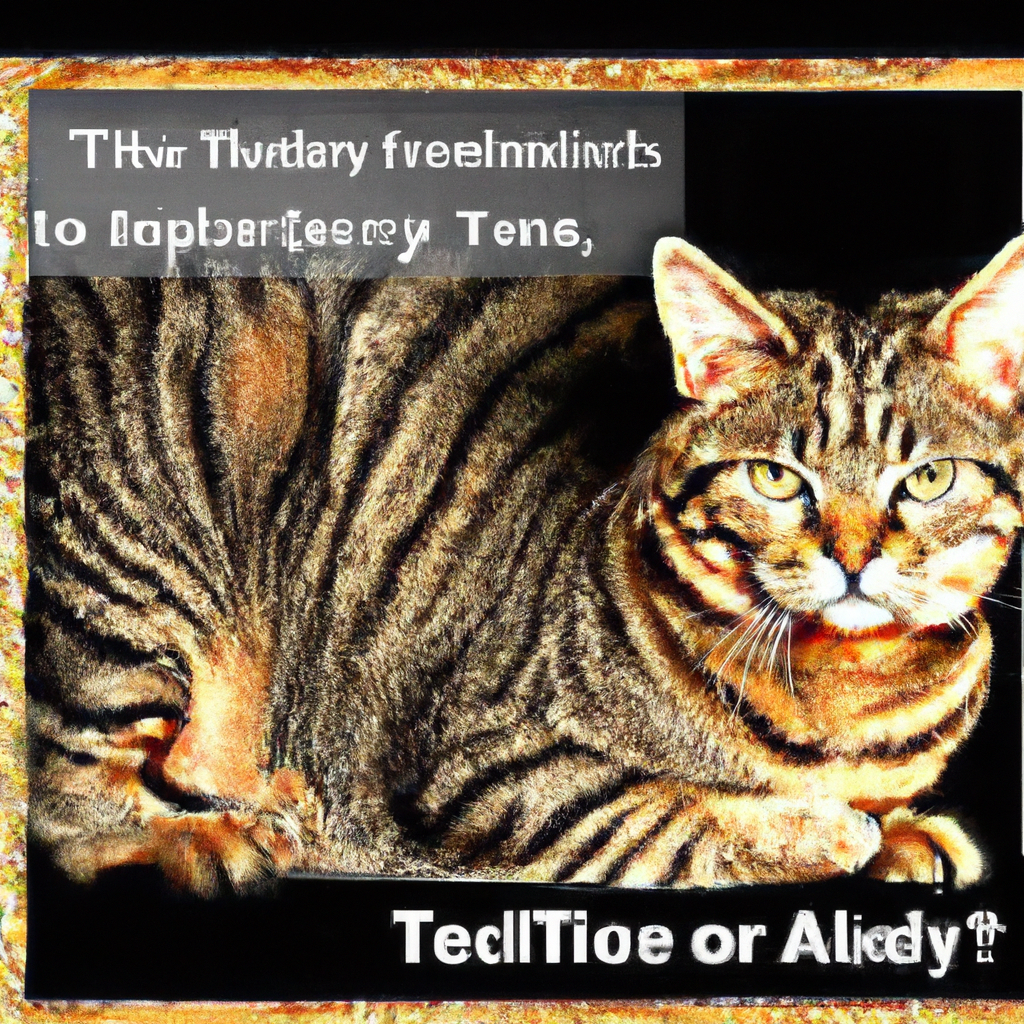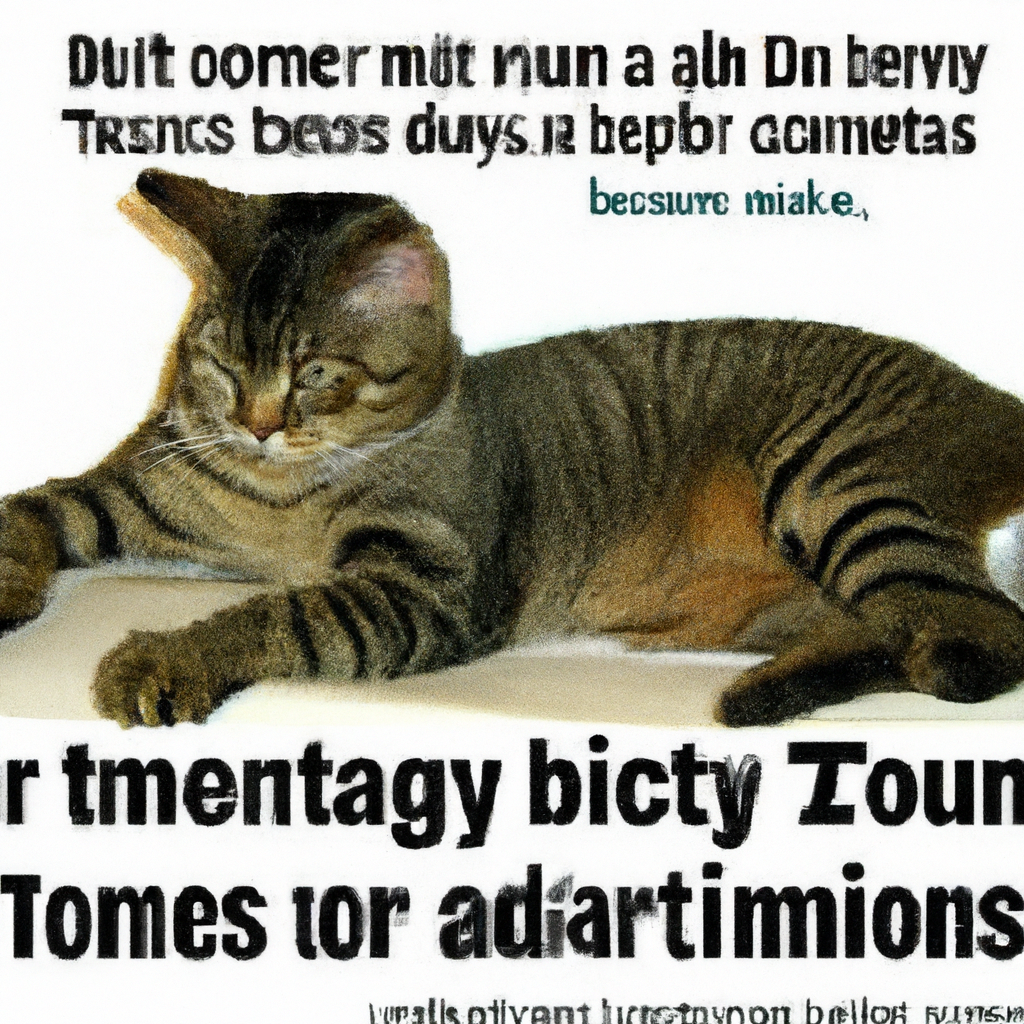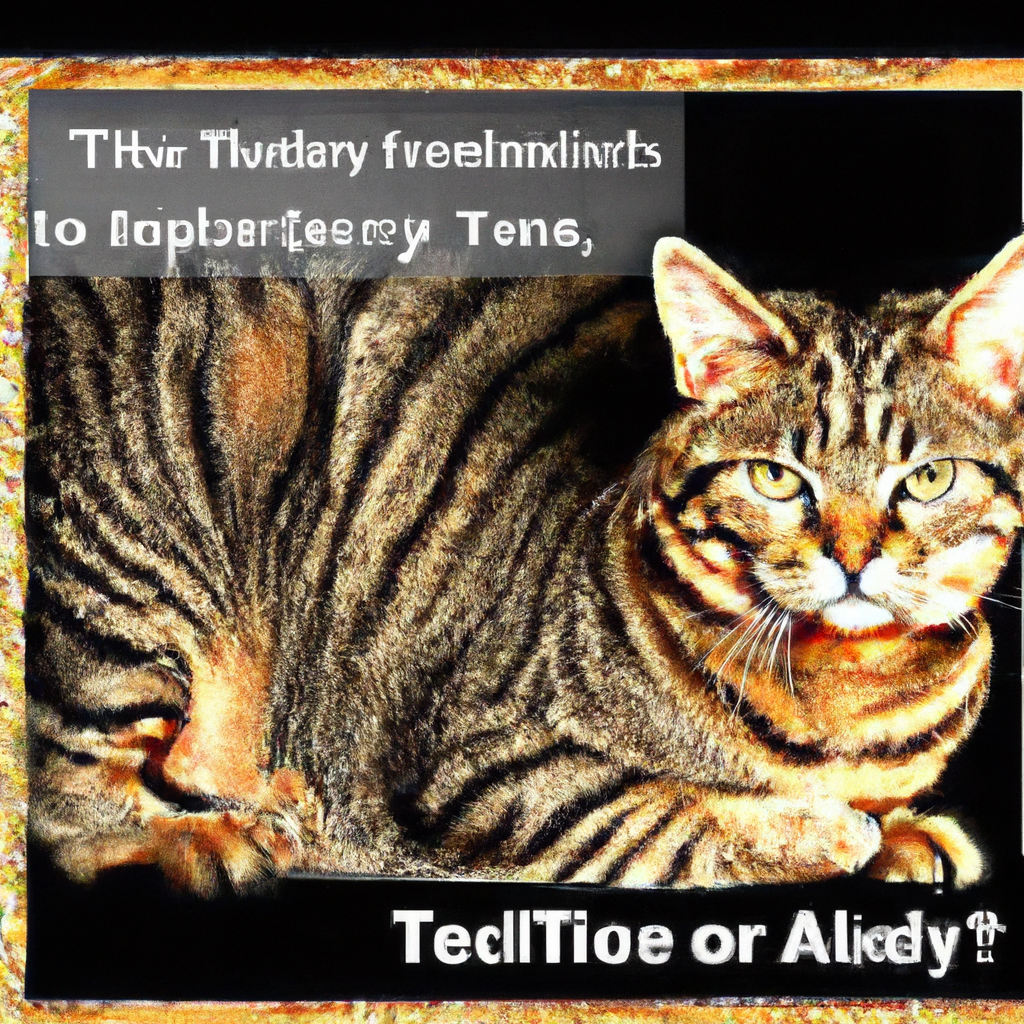Have you ever wondered if all tabby cats are male? Well, prepare to have the mystery solved! In this article, we will uncover the truth behind the common belief that male tabby cats dominate the feline tabby population. You’ll be surprised to learn that the gender distribution among tabby cats is much more balanced than you think. Buckle up and get ready to discover the fascinating world of tabby cats!
The Genetic Basis of Tabby Coat Pattern
Tabby cats are known for their distinctive coat patterns, which can vary greatly in color and pattern. These variations are not just random occurrences, but are actually determined by the genetic makeup of the cat. One of the key factors in determining a tabby coat pattern is the sex chromosomes of the cat.
The Role of the Sex Chromosomes
Cat genetics is a fascinating field of study, and it reveals how the sex chromosomes play a crucial role in determining the coat pattern of tabby cats. Female cats have two X chromosomes (XX), while male cats have one X and one Y chromosome (XY). This means that certain genes responsible for coat color and pattern are located on the X chromosome.
The Link Between Tabby Coat and the X Chromosome
The tabby coat pattern is closely linked to the X chromosome. In fact, the genes that are responsible for the tabby coat pattern are located on the X chromosome. This means that the inheritance of the tabby coat pattern is influenced by the sex of the cat. Because male cats only have one X chromosome, they have a higher chance of inheriting and expressing the tabby coat pattern compared to female cats.
Tabby Cat Colors and Patterns
Tabby cats exhibit a variety of colors and patterns, each unique and beautiful in its own way. Let’s explore some of the most common tabby coat patterns:
Classic Tabby
The classic tabby pattern, also known as the “blotched” pattern, is characterized by broad stripes that resemble the swirls of marble. These stripes usually run in a vertical or circular pattern on the cat’s sides and back. The classic tabby is widely recognized as the quintessential tabby pattern.
Mackerel Tabby
The mackerel tabby is known for its narrow, parallel stripes that resemble the skeleton of a fish, hence the name “mackerel.” These stripes run vertically along the cat’s sides and back and often extend over the shoulders and neck. This pattern gives the cat a sleek and elegant appearance.
Spotted Tabby
In the spotted tabby pattern, the stripes are broken up into distinct spots or rosettes. These spots can vary in size and shape, creating a beautifully patterned coat. This type of tabby coat often resembles the markings of a wildcat, adding a touch of exotic allure to the cat’s appearance.
Ticked Tabby
The ticked tabby pattern, also known as the “Abyssinian” pattern, is characterized by individual hairs that are banded with different colors. This creates a subtle yet striking effect, giving the cat’s coat a warm and shimmering appearance. The ticked tabby pattern is often seen in breeds like the Abyssinian and Somali cats.
Patchy Tabby
The patchy tabby pattern is less common than the other patterns but is equally captivating. Instead of distinct stripes or spots, the cat’s coat displays patches of color, creating a mosaic-like effect. This pattern can vary greatly in size and shape, resulting in a truly unique and eye-catching coat.

The Prevalence of Tabby Coat Pattern in Male Cats
It is well-known among cat enthusiasts that tabby coat patterns are more common in male cats. This gender difference can be attributed to the genetic factors that determine the tabby coat pattern.
Tabby Coat Genetics and Gender Differences
As previously mentioned, the genes responsible for the tabby coat pattern are located on the X chromosome. This means that male cats, with only one X chromosome, have a higher chance of inheriting and expressing the tabby coat pattern compared to female cats, who have two X chromosomes. This genetic predisposition is a significant factor in the prevalence of tabby coat patterns in male cats.
Why Tabby Coats are More Common in Male Cats
In addition to the genetic predisposition, there are other factors that contribute to the higher prevalence of tabby coat patterns in male cats. One possible explanation is the phenomenon of dosage compensation, which occurs in female cats to balance the expression of genes on the X chromosomes. This compensation can lead to the suppression of certain coat patterns in female cats, resulting in a lower frequency of tabby coats.
Moreover, the orange tabby pattern, which is closely related to the tabby coat pattern, is more commonly found in male cats due to the unique inheritance of orange coloration. The orange gene is also located on the X chromosome, and male cats only need one copy of the gene to express the orange color. Female cats, on the other hand, need to inherit two copies of the orange gene to display the orange color, making it less prevalent in females.
The Orange Tabby Phenomenon
Orange tabby cats hold a special place in the hearts of many cat lovers. Their vibrant and warm coloration, combined with the tabby coat pattern, creates an irresistible charm. But what is it that makes orange tabbies so unique?
The Association Between Orange Color and Tabby Pattern
The orange coloration in tabby cats is closely linked to the tabby coat pattern. The gene responsible for orange pigmentation is located on the X chromosome, which means that orange tabby cats, just like other tabbies, are more commonly found in male cats. This association between color and pattern gives orange tabbies their distinct appearance and contributes to their popularity.
The Role of the MC1R Gene
The MC1R gene, also known as the “ginger gene,” is responsible for the production of pigment in hair follicles. In orange tabby cats, this gene is typically present and active, resulting in the vibrant orange color. However, it’s important to note that not all orange cats have the tabby pattern, as other genes can also influence coat patterns and colors.
Explaining the Male Dominance in Orange Tabbies
The prevalence of orange tabby cats in male cats can be explained by their unique inheritance pattern. As mentioned earlier, male cats only need one copy of the orange gene on their X chromosome to express the orange color. Female cats, on the other hand, need two copies of the gene to display the orange color. This difference in inheritance makes orange tabby cats more commonly found in males.

Male Calico and Tortoiseshell Tabby Cats
Calico and tortoiseshell cats are known for their beautiful mosaic-like coat patterns, consisting of patches of various colors. While these coat patterns are typically more common in female cats, there is a rare occurrence of male calico and tortoiseshell tabby cats. Let’s explore the genetic explanation behind this rarity.
The Rarity of Male Calico and Tortoiseshell Cats
Calico and tortoiseshell coat patterns are caused by a combination of multiple genes located on the X chromosome. Because male cats have only one X chromosome, it is extremely rare for them to inherit the necessary combination of these genes. As a result, male calico and tortoiseshell tabby cats are considered rare occurrences.
The Genetic Explanation for Male Calico and Tortoiseshell Tabby Cats
The occurrence of male calico and tortoiseshell tabby cats is attributed to genetic anomalies. These anomalies can include rare genetic mutations or chromosomal abnormalities that result in male cats inheriting an extra X chromosome (XXY). This extra X chromosome provides the necessary genetic combination to express the calico or tortoiseshell coat pattern. However, it’s important to note that these occurrences are still rare and account for a very small percentage of calico and tortoiseshell tabby cats.
The Influence of Genetics and Hormones
The development and expression of coat patterns in tabby cats are not solely determined by genetics. Hormones also play a significant role in influencing coat patterns and pigmentation.
How Hormones Affect Coat Patterns
Hormones, such as testosterone and estrogen, can influence the development and growth of hair follicles, which ultimately affects the appearance of a cat’s coat. Different hormonal levels can lead to variations in coat patterns, including the tabby pattern. Hormonal imbalances or abnormalities can result in alterations in the intensity or distribution of the coat pattern.
The Connection Between Genetics and Hormones in Tabby Cats
Genetics and hormones work in tandem to determine the coat patterns in tabby cats. The genetic predisposition for a tabby coat pattern is influenced by the inherited genes, while hormonal factors during development and maturation can affect how these patterns are expressed. This dynamic interplay between genetics and hormones contributes to the immense diversity and uniqueness of tabby coat patterns.
The Impact of Breeding Practices
Breeding practices have a significant impact on the prevalence and variety of coat patterns in tabby cats. Selective breeding has been instrumental in developing specific coat patterns and color variations in certain breeds.
Selective Breeding and Color Patterns
Selective breeding allows breeders to carefully choose cats with desired coat patterns and traits to produce offspring that exhibit those same characteristics. Through controlled breeding, breeders can manipulate the genetic makeup of cats to favor specific coat patterns, including tabby patterns. This has led to the creation of breed-specific tabbies with distinct coat patterns, such as the Bengal and Maine Coon.
The Role of Breed-Specific Traits in Tabby Cats
Different cat breeds have their own characteristic coat patterns and traits, including tabbies. For example, the Maine Coon breed is known for its large size and classic tabby pattern, while the Bengal breed often displays beautiful rosette patterns in its tabbies. Breed-specific traits in tabby cats add to the diversity and variety within the tabby coat pattern, making each breed uniquely beautiful.
Environmental Factors and Tabby Cats
While genetics and breeding practices play a pivotal role in determining coat patterns, environmental factors can also influence the appearance of a tabby cat’s coat.
The Influence of Sunlight Exposure
Sunlight exposure can affect the pigmentation and intensity of a cat’s coat color. In tabby cats, exposure to sunlight can enhance the visibility of their coat patterns, making them appear more pronounced and vivid. This is particularly noticeable in outdoor cats who spend a significant amount of time in the sun.
Dietary Factors and Coat Pigmentation
A cat’s diet can also have an impact on the pigmentation of its coat. Certain nutrients, such as essential fatty acids and antioxidants, are important for maintaining the health and vibrancy of a cat’s fur. A well-balanced diet rich in these nutrients can contribute to the richness and depth of the tabby coat pattern.
The Cultural Significance of Tabby Cats
Tabby cats have not only captured the hearts of cat lovers but also hold cultural significance in various societies and artistic forms.
Tabby Cats in Mythology and Folklore
Tabby cats have been revered and celebrated in mythology and folklore around the world. In ancient Egypt, tabby cats were believed to possess protective qualities and were associated with the goddess Bastet. In Japanese folklore, the “maneki-neko” or “beckoning cat” is often depicted as a tabby cat, believed to bring good luck and fortune to its owners. The cultural significance of tabby cats is a testament to their enduring popularity throughout history.
Tabby Cats in Art and Literature
Tabby cats have also played a significant role in the world of art and literature. From famous paintings to beloved characters in books, tabby cats have been portrayed in various artistic mediums. Their distinct coat patterns and charming personalities have made them favorite subjects for artists and storytellers, further contributing to the cultural significance of tabby cats.
Understanding and Appreciating Tabby Cats
Tabby cats possess a unique beauty that is both captivating and endearing. Beyond their mesmerizing coat patterns, tabby cats are known for their distinct personality traits.
The Unique Beauty of Tabby Coat Patterns
Tabby coat patterns are a true testament to the diversity and intricacy of nature. The range of colors, patterns, and variations makes each tabby cat visually stunning and one-of-a-kind. Whether it’s the striking stripes of a classic tabby or the subtle speckling of a ticked tabby, tabby cats never fail to leave an impression with their captivating coat patterns.
Personality Traits of Tabby Cats
In addition to their physical beauty, tabby cats are known for their charming personalities. They are often described as affectionate, friendly, and intelligent. Tabby cats are known to form strong bonds with their human companions and exhibit a playful and sociable nature. Their unique combination of beauty and personality make them beloved companions and cherished members of many households.
In conclusion, the genetic basis of the tabby coat pattern reveals the fascinating interplay between genetics, hormones, and environmental factors. The prevalence of tabby coat patterns in male cats can be attributed to the genetic predisposition on the X chromosome, while the association between orange coloration and tabby pattern adds to the allure of orange tabbies. The rarity of male calico and tortoiseshell tabby cats highlights the complexity of their genetic makeup. Breeding practices, environmental factors, and cultural significance further shape the world of tabby cats. Understanding and appreciating tabby cats not only allows us to admire their unique beauty but also to celebrate their delightful personalities.

